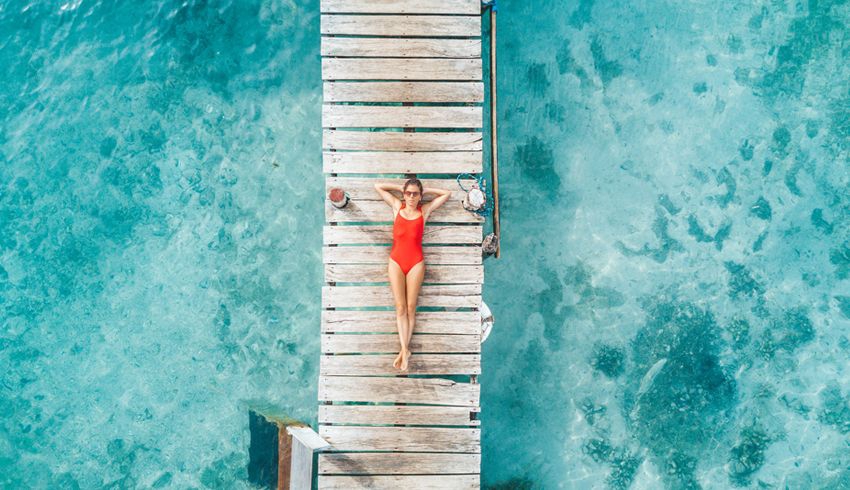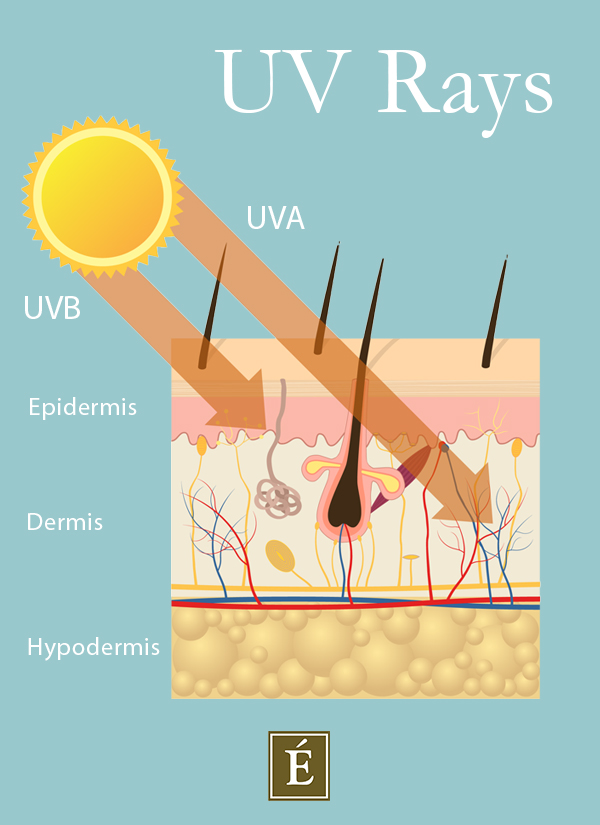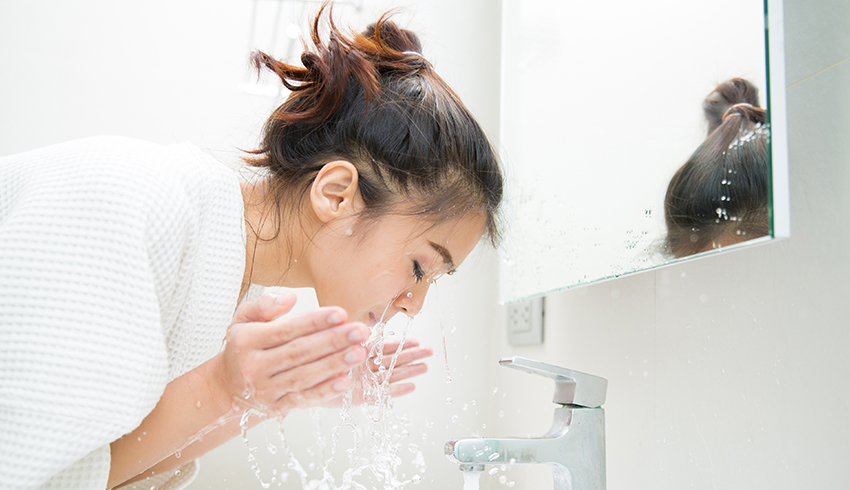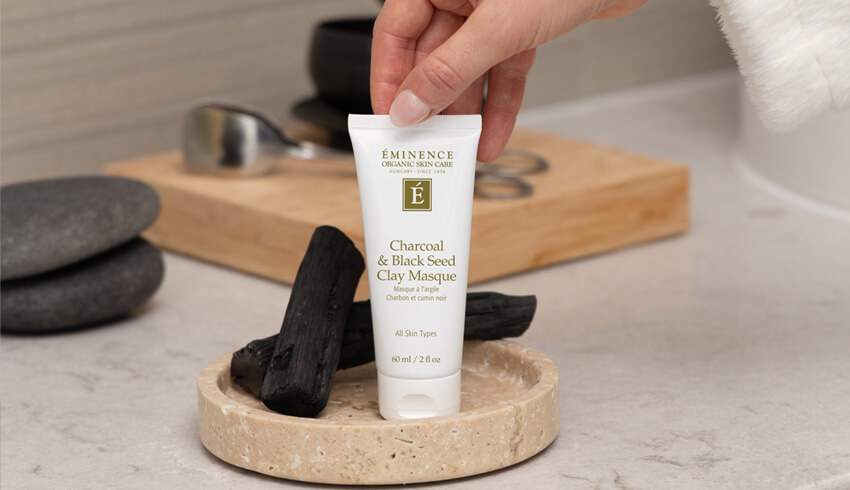
We all hear about the dangers we face from the sun. Beauty magazines proclaim the sun’s aging effects, medical experts lecture us on skin cancer and your friends Instagram the latest photos of their painful sunburns.
We say: Believe the hype and get informed because, like most people, you’re probably using your sunscreen wrong. According to a University of Minnesota experiment, 33% of people are not using enough sunscreen. Want to make sure you’re truly protected this summer? Here’s a definitive guide to natural sunscreen and how to wear it.
What’s The Difference Between UVA & UVB rays?
UV rays (or ultraviolet light) are a type of electromagnetic radiation that the sun beams to Earth. There are two types of UV light: UVA and UVB. UVB are the rays that damage the epidermis, or the top layer of the skin. They cause sunburns and are the primary cause of sun damage and skin cancer. UVA rays, on the other hand, penetrate more deeply than UVB rays, through the epidermis and into the middle layer of the dermis. They’re also powerful enough to pass through glass and cloud cover - so if you think that you’re safe on a cloudy day or behind a car window, think again. Although they contribute less to sunburn, UVA rays accelerate aging and are the main reason for wrinkles and fine lines caused by sun damage. Like UVB rays, they are also responsible for causing skin cancer.

What SPF Should I Choose?
SPF stands for Sun Protection Factor and measures how long your skin will be protected from UVB rays only. However, since both types of rays are harmful to the skin, we recommend making a broad-spectrum choice that protects against both UVB and UVA rays. For extended, intense exposure, The Skin Cancer Foundation states that it’s best to choose an SPF of 30, a protective factor which filters out 97 percent of the sun’s UV radiation.
How Much Sunscreen Do I Need To Put On?
For The Face And Neck:
According to the Skin Cancer Foundation, one teaspoon of sunscreen on each area is sufficient protection.
If you’re looking for mineral protection, our Lilikoi Mineral Defense Moisturizer SPF 40 is an easy-to-apply formulation that shields your skin from environmental elements, including the sun. For beautiful, natural-looking coverage, apply liberally using these steps:
- If you have dry skin, start with a layer of hydration first, like the Mangosteen Daily Resurfacing Concentrate or our Bamboo Firming Fluid.
- Apply a small amount of product and ensure it is completely absorbed.
- Apply another thin layer and build coverage as needed to match your skin type.
Your skin will be left lightly hydrated and protected from the damaging effects of the sun.
For The Body:
If you’re looking for an mineral sunscreen, try our Lilikoi Mineral Defense Sport Sunscreen SPF 30. This easy-to-apply sport formulation is non-greasy and water-resistant up to 40 minutes. For the best protection, make sure you apply a liberal layer over the face and body 15 minutes before sun exposure. Reapply every two hours, or after 40 minutes if you’re swimming or sweating.
Where Do I Apply?
Not only should you slather sunscreen on the main parts of your face and body but also these easily forgotten areas: the tops of the ears, lips, back of the neck and the hands. Men with little to no hair should always be diligent in applying sunscreen to the entire head!
How To Apply SPF While Wearing Makeup
With all the events going on during the summer (wedding season!), you need to be protected but still, look good. We recommend Eminence Organics Sun Defense Minerals as the easiest and safest way to get that sun-kissed glow. Use a lighter shade of Sun Defense Minerals as your foundation or highlighter, and a darker shade as your bronzer or contour. You can also use Sun Defense Minerals as a tint for your décolleté, shoulders and legs to give the appearance of a natural tan!
Find out more about our sun essentials including sun care products that protect your skin naturally during the summer season.


